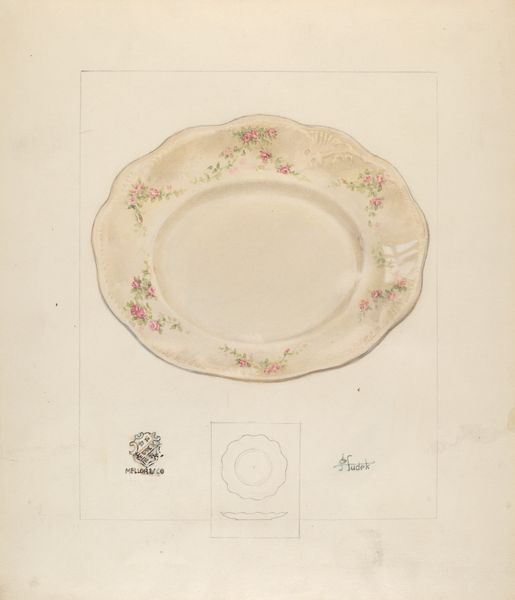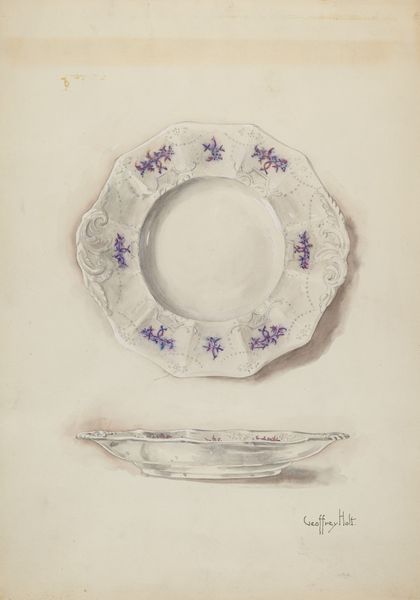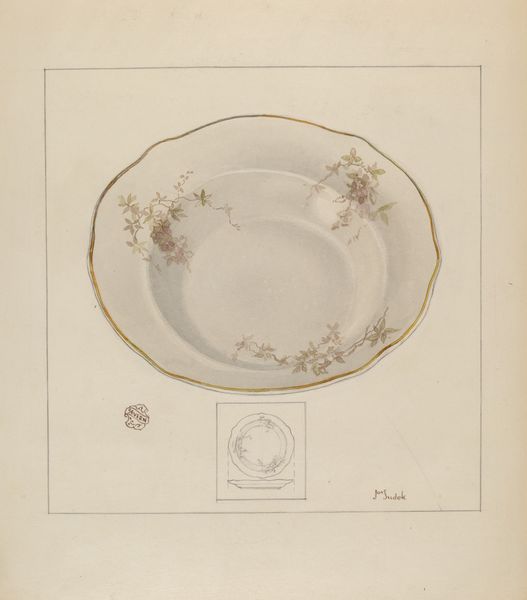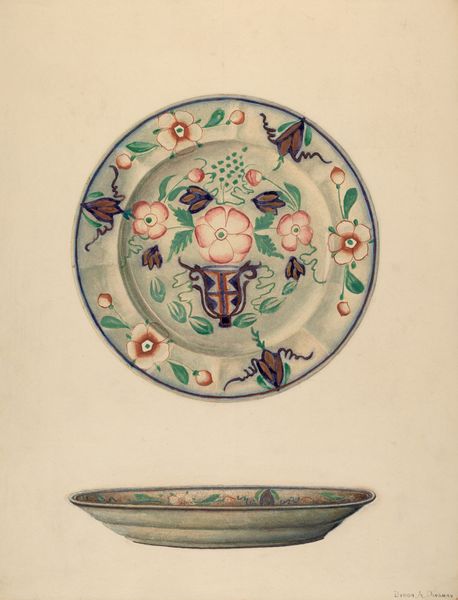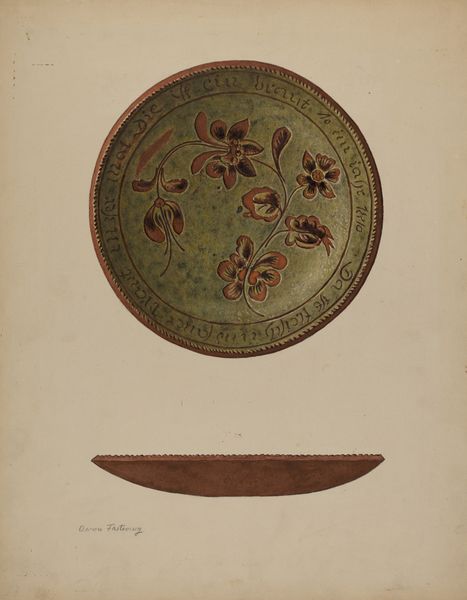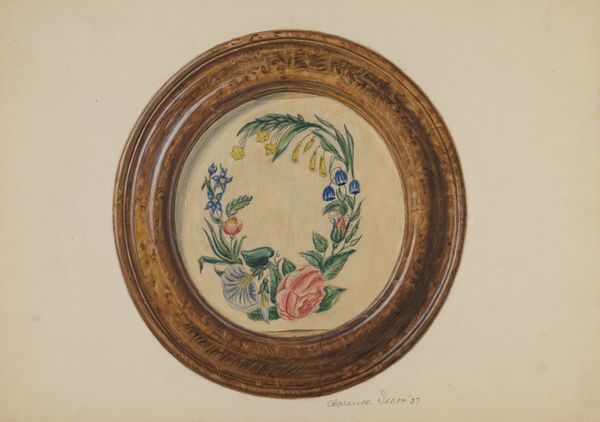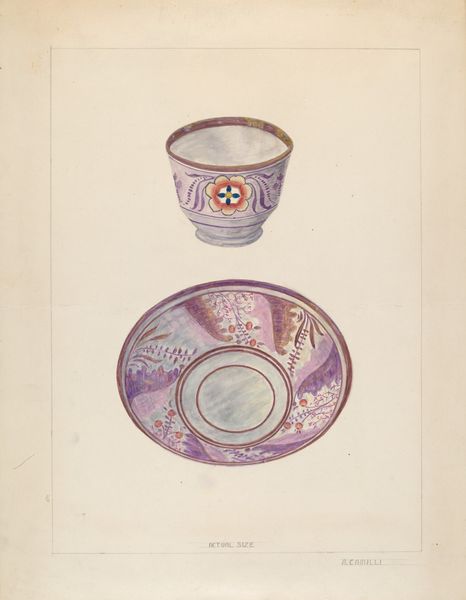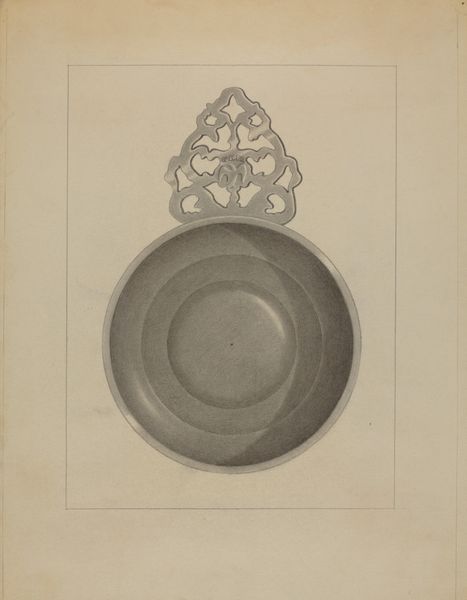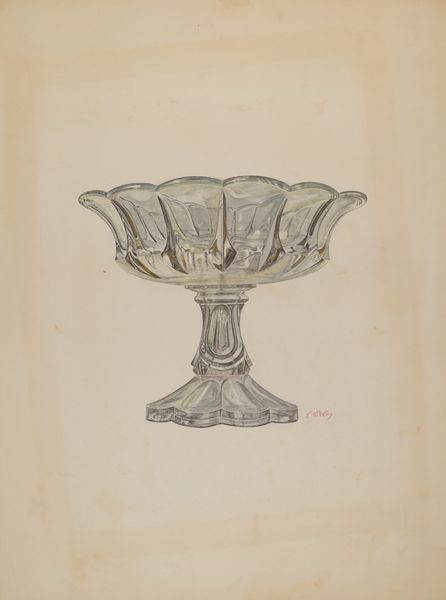
drawing, ceramic, watercolor
#
drawing
#
ceramic
#
watercolor
#
ceramic
#
decorative-art
Dimensions: overall: 35.6 x 26.7 cm (14 x 10 1/2 in.) Original IAD Object: 1 1/4" High(exact) 7 3/4" Dia(exact)
Copyright: National Gallery of Art: CC0 1.0
Curator: This is a watercolor and drawing on ceramic created around 1936 by Kurt Melzer. It’s simply titled “Plate.” Editor: There's a charmingly understated quality about it, almost ethereal. The shamrock design evokes a sense of Irish heritage or perhaps a St. Patrick's Day celebration. I notice there are actual size indications that hint toward production rather than display of the decorative arts piece. Curator: Exactly. It's quite fascinating because the watercolor provides insight into the decorative arts production methods and commercial appeal of ceramics. The artist possibly created a guide for artisans, or clients. Editor: Do you think Melzer worked in dialogue with social currents in the artworld such as craft collectives and production-oriented models? It is in opposition to the mythic idea of individual artists who work separate from a public eye. Curator: Melzer worked within the intersection of decorative arts and graphic design that shaped middle class aspirations of affordable domestic style. The politics of craft at this time involved the social construction of the objects found in the home and gendered divisions of labor surrounding art, utility, and value. Editor: The fact that there's a section view drawing below showing dimensions really reinforces that instructional intent. But then you see the organic shamrock decoration, slightly uneven in placement and feel this interesting juxtaposition between mechanical production and handmade imperfection. Do you think this drawing could become something more or speak to artistic genius if placed in a modern art context today? Curator: Definitely. Seen through the lens of contemporary art, the design could function as social critique and performance, especially since artists frequently address intersectionality today by employing material culture as language to consider identity politics, race, and even economics. Editor: So it invites an ongoing conversation between craft, design and the very concept of "art" in a capitalist, consumption driven world. Thank you! Curator: A potent point. A single plate’s drawing, and the dialogues it creates about commercial style versus craft heritage versus an item’s ability to spark ideas! Thank you!
Comments
No comments
Be the first to comment and join the conversation on the ultimate creative platform.
